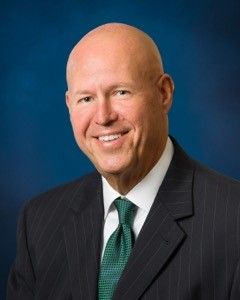Wayne Gretzky, arguably the greatest hockey player of all time, once famously shared his key to success: “Skate to where the puck is going, not where it has been.” This advice resonates well beyond the ice rink. Wellness and how it’s seen and valued has shifted in recent years and is continuing to dramatically shift in 2022. As ACE Certified professionals seeking to grow our ability to serve people, it’s worth asking: Where is the “puck” of wellness going?
Here are three key indicators that can help bring the future of wellness into focus for us:
- The World Health Organization’s (WHO) 11th revision of the International Classification of Diseases (ICD-11) went into effect on January 1, 2022. With this revision, the definition of burnout has been updated from a stress syndrome to a syndrome conceptualized as resulting from chronic workplace stress that has not been successfully managed. It is characterized by three dimensions: (1) feelings of energy depletion or exhaustion; (2) increased mental distance from one’s job, or feelings of negativism or cynicism related to one’s job; and (3) a sense of ineffectiveness and lack of accomplishment. Burnout refers specifically to phenomena in the occupational context and should not be applied to describe experiences in other areas of life.
- The budget dedicated to corporate well-being programs is up, reaching an average of $6 million, and for large employers (20,000-plus employees), the average budget has increased to $10.5 million. In fact, 92% of respondents to the 12th Annual Employer-Sponsored Health & Well-Being Survey expanded their support for programs addressing issues such as stress management, sleep improvement and resiliency, as well as supporting mental health programs for dependent children.
- Telehealth and the associated remote/virtual delivery of wellness as reported by the Department of Health and Human Services has forever changed the landscape of what is possible. The barriers that existed around using and engaging in a virtual manner have been eliminated. In doing so, the scalability of delivering and receiving services is no longer bound by geography, and cost/time barriers have been significantly reduced. Additionally, considerable evidence exists to support the efficacy of live video health and wellness coaching for producing positive effects on patients’ physiological, behavioral and psychological conditions and on their social life. In particular, statistically significant results revealed better weight management, increased physical activity, and improved physical and mental health status.
Among these key indicators, the ICD-11 defining burnout as a chronic workplace stress is particularly significant. Viewing this through the lens of the National Institute for Occupational Safety and Health (NIOSH) Total Worker Health program makes clear the correlation between wellness and worker safety. While organizations are already investing more money into well-being programs, as evidenced by key indicator number two, this new definition of burnout helps to transform workplace wellness into an important element of occupational safety. When we combine this compelling need with the ability to meet it with health and wellness coaching, we are met with opportunity.
Here are some ways you can use these new developments to expand your opportunities to serve more clients:
- Infuse your client-facing messaging with language that communicates how your services enhance wellness and well-being. Consider specific workplace wellness messaging that directly addresses the three dimensions of burnout outlined by WHO. Use a problem-solution approach where you connect your solution to each “problem”: feelings of energy depletion or exhaustion; increased mental distance from one’s job, or feelings of negativism or cynicism related to one’s job; and a sense of ineffectiveness and lack of accomplishment.
- Position yourself to take full advantage of future opportunities to deliver your services in workplace wellness and/or to become a full-time employee in one of the many digital health companies rising up to meet this market. If you are not an ACE Certified Health Coach, now is the time to start working toward earning your certification. If you are already certified, launch forward into the ACE Health Coach Advanced Training Program and maximize your capabilities. If these two paths are not a fit for you now, consider the Behavior Change specialist program to gain the skills you need. Access the abundance of free ACE articles and blogs on topics such as meditation and mindfulness to increase your understanding of these evidence-based tactics for alleviating stress and increasing energy and feelings of well-being.
In taking Gretzky’s axiom to “skate to where the puck is going, not where it has been” to heart, notice the first word is one of action. Knowing where the puck is going is of value only when it is coupled with action. The most important factor in shaping your future opportunities is you. Will you view your future as a matter of chance or as a matter of choice? What actions will you take to prepare and propel yourself into your bright future?




 by
by 










 by
by